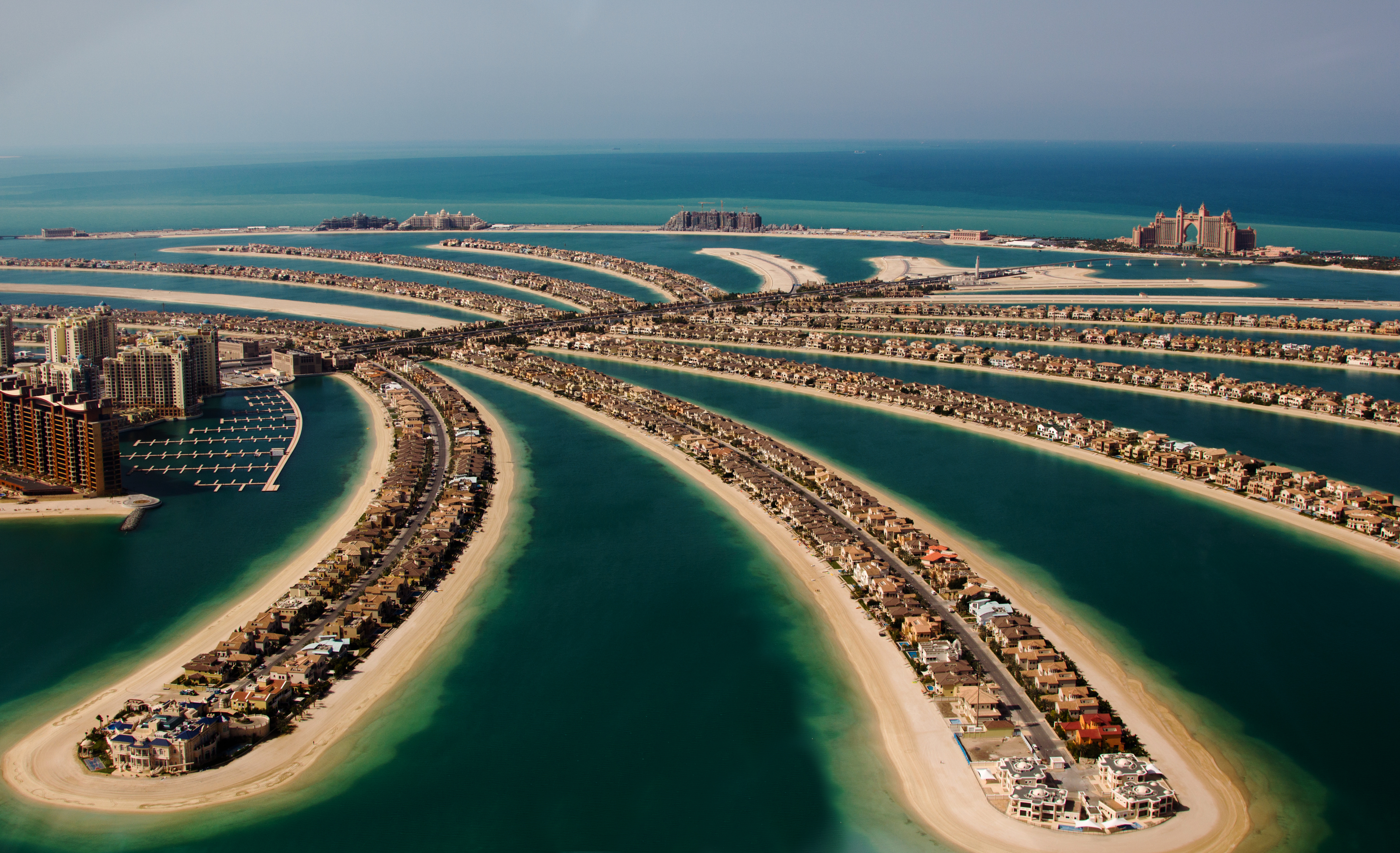Dubai is home to many a feat of engineering, but perhaps one of its most iconic is the Palm Jumeirah. This palm-tree-shaped archipelago of artificial islands began construction in 2001 and has since gone on to become one of the city’s most recognizable landmarks.
So how do you make the world’s biggest artificial set of islands, which added a whopping 56 kilometers (35 miles) to Dubai’s coastline? With a whole lotta dredged-up sand and a whole lotta rock, it turns out.
Rather than using the building materials you might see across the rest of the city, like steel and concrete, the project utilized natural resources. Over 7 million tons of rock were mined from the Hajar Mountains, whilst Dutch company Van Oord set to dredging up around 120 million cubic meters of sand from the bottom of the Persian Gulf.
You might be wondering why they didn’t use desert sand considering the area surrounding Dubai is, well, very sandy. “Desert sand liquifies once in the water,” Ali Mansour, who worked on the project, explained to CNN Travel. Considering the plans to house thousands of residents and several hotels on the islands, non-liquefying sand was the more preferable of the two.
But sand can also be liquefied by other means, such as earthquakes. To combat this, the engineers compacted the sand using a technique called vibro compaction, which is designed to stabilize the material and stop it from acting like water. This required taking a massive vibrator (not that kind) and plunging it (stop it) into the ground, where the vibrations forced the particles of sand into the most compact arrangement.
The archipelago also has another big protective measure. Constructed from the hefty amount of rock mentioned above, the islands are surrounded by an 11-kilometer-long (7-mile) breakwater. This was designed to protect the inner “fronds” from damage by waves or sand erosion.
Unfortunately, the lack of waves also led to stagnant water – and that’s not the only consequence of the project. While the palm looks impressive, researchers have found that its construction has led to shoreline erosion elsewhere, deterioration of coral reefs, and higher temperatures.
The archipelago does, however, provide escapism in equal measure. Over 20 years since construction began, there’s an abundance of luxury hotels, aquariums, shopping centers, and of course, beaches. There are even plans to open one of the world’s highest infinity pools later this year.

The islands are home to thousands of residents.
Image credit: Marat Dupri/Shutterstock.com
Whilst it’s the world’s biggest artificial archipelago, the Palm Jumeirah isn’t home to the world’s biggest artificial island. Flevopolder in the Netherlands takes that particular crown. Built in 1968, the 972-square-kilometer (374.5-square-mile) island acts as flood protection and additional agricultural land.
And not to knock a man-made construction when it’s down, but the Palm Jumeirah also isn’t even supposed to be the biggest artificial archipelago – that title was planned to belong to Palm Jebel Ali. Construction on the project began back in 2002, but financial difficulties led to it being suspended, though last year saw renewed plans to bring the project back to life.
For now, the Palm Jumeirah remains on top… of a lot of sand and rock.
Source Link: The Palm Jumeirah Is The World's Largest Archipelago Of Artificial Islands